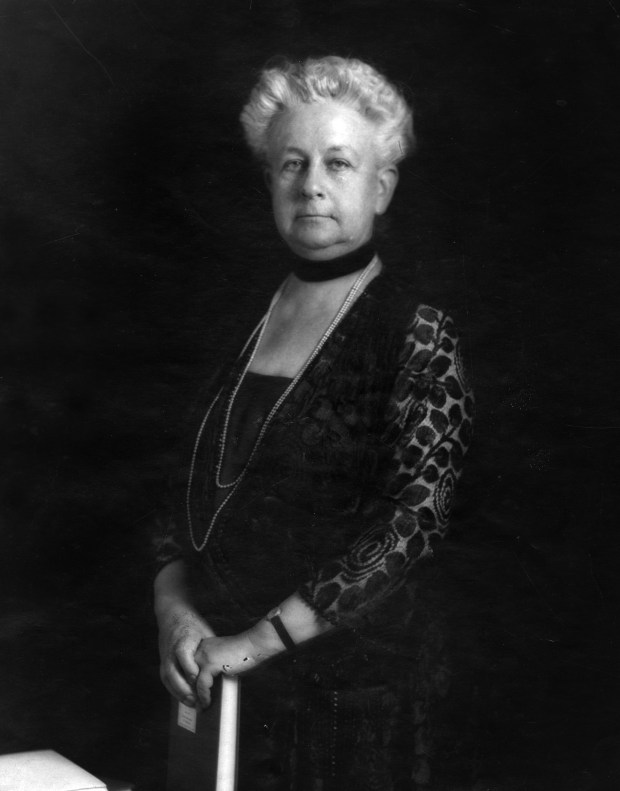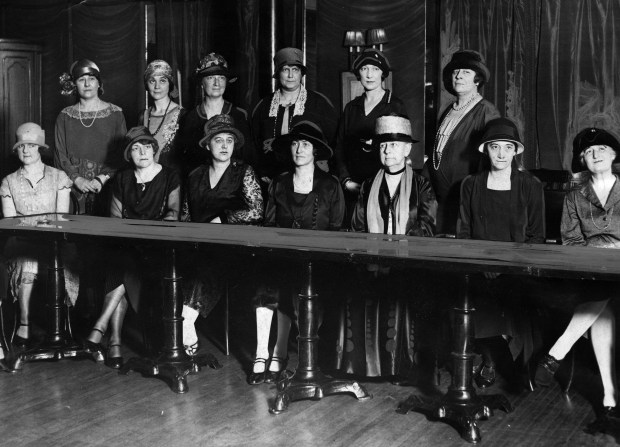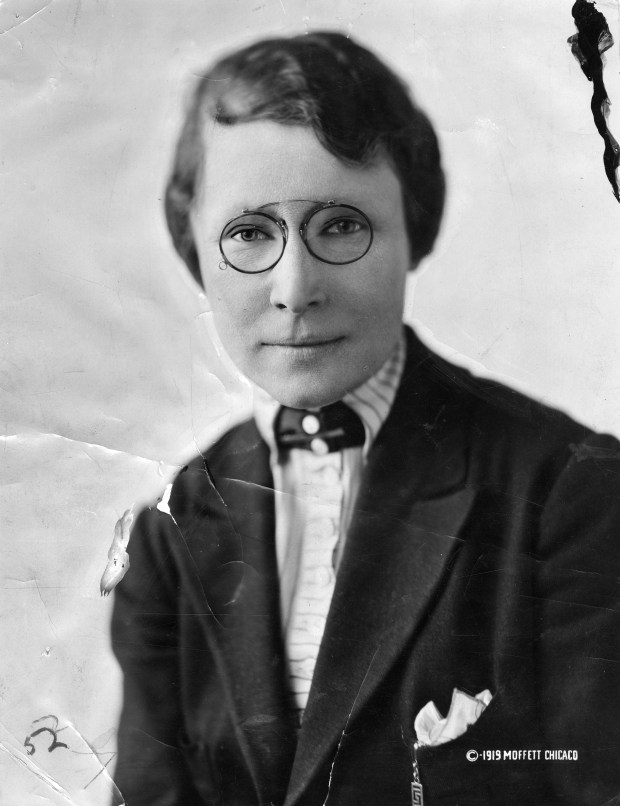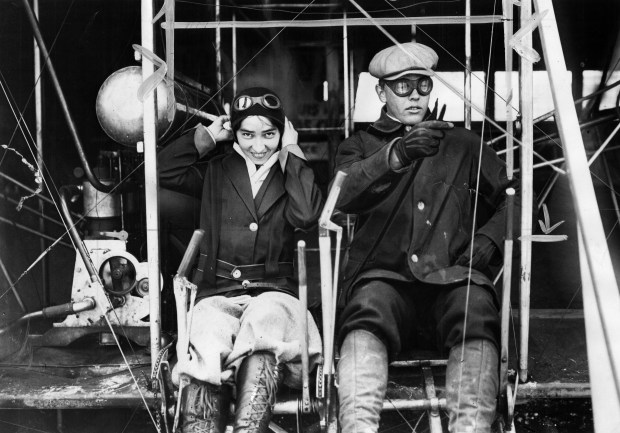It was quite a coup for the event’s organizers when President Calvin Coolidge agreed to open the 1925 Woman’s World Fair via a radio hookup from the White House.
The technology was untested, the exposition had no precedent, and Coolidge was a man of few words. Ruth Hanna McCormick knew that when making the request. Assuming she’d have only a few minutes to make a pitch, the prominent Chicagoan rushed through it. Silence followed.
“What’s your hurry?” asked the president, who much preferred listening to talking. He said he was interested and urged her to tell him more. “A veritable burst of enthusiasm from our too often silent chief, wasn’t it!” the Tribune society reporter noted.
It wasn’t his fault that his subsequent radio address was garbled.
A cow that McCormick brought to the fair as a publicity stunt protested vociferously as Coolidge’s words were broadcast by a loudspeaker in the American Exposition Palace at Lake Shore Drive and Erie Street. “I thought I was opening a Woman’s World Fair,” Coolidge later said, as recounted by the fair’s chairwoman, Louise de Koven Bowen, “but it seems I was only ballyhooing Ruthie’s cow.”
Actually, a whole host of exhibits made the fair a success. It began with a parade of infantry, cavalry and artillery battalions from Grant Park to the fair. Over eight days it drew 200,000 visitors, earned $50,000 in addition to liquidating the cost of mounting it, and made its point loud and clear: Women’s accomplishments were considerable and would be greater still, once men got out of their way.
In proof of that proposition, the fair featured the likes of Lillian Tolbert. A young Black woman, she invented the Tolbert Ice Pitcher, which cooled drinks. “And the only man who had anything to do with it,” Tolbert said, “was the attorney in the patent office at Washington.”
The fair encouraged women to consider a wide range of job choices by presenting flesh-and-blood examples: “Women radio workers, tentmakers, telegraphers, upholsterers, railway dairy workers and owners, editors, etchers, inventors, occupy the various booths,” the Tribune reported. At subsequent fairs, their variety was even greater:
“The 1928 fair, held at the Coliseum, had some 250 booths displaying women’s endeavors that ranged from architecture, dentistry, and engineering to banking, publishing and printing,” the Tribune wrote in a 1988 retrospective.
Of course, there were counterexamples. Katherine Stinson’s appearance at the 1928 fair was previewed by the Tribune under the headline: “Woman’s World Fair to Show Place Taken by Sex in Aviation.” A pioneering aviator known as the “Flying School Girl,” Stinson did aerial acrobatics, set distance and speed records, and carried airmail for the U.S. Postal Service.
“But, she confided, her husband objects to her flying, so she is studying architecture,” a Tribune reporter noted.
McCormick almost didn’t make it to the fair. Earlier that year, her husband, Sen. Medill McCormick, died by suicide after failing to be nominated for reelection.
As the McCormick family owned the Chicago Tribune’s newspaper empire, the cause of his death could be kept quiet. But, devastated, Ruth McCormick felt the impulse to retire from public life.
McCormick already had an impressive resume and was a major player in the struggle for women’s voting rights. She bought a dairy farm so her children could drink germ-free milk, selling the surplus so other children could too.

Keeping busy was the best way to deal with loss, said Alice Roosevelt Longworth, ex-President Theodore Roosevelt’s daughter. Heeding her best friend’s advice, McCormick returned to the 1925 fair. She brought with her a cow to represent every woman’s right to know that the food on her family’s table wasn’t contaminated.
McCormick’s partner in the fair project was Helen Bennett. In 1928, she was among several women the Tribune’s Inquiring Reporter asked: “Do you still cherish the doll of your youth?”
“I thought dolls were a little slow, one had to sit down with them and be quiet, and I preferred to move around and be doing things,” Bennett replied. “I’m the same way now.”
De Koven Bowen was another formidable presence leading the fair. Her biography was titled “Growing Up With a City,” at the insistence of her publisher. Bowen wanted it to be titled, ”Kicking and Screaming for Fifty Years.”
“When I took a walk, I liked to go into the poorer parts of the town and see what was going on,” she once said.

It was obvious that inner-city children scarcely saw a blade of grass. They played in garbage-strewn alleys. That inspired her purchase, on behalf of Hull House, of parkland for the Joseph Tilton Bowen Country Club near Waukegan around 1912. Named for her husband, it provided poor children a summertime asylum from Chicago’s slums. Hopefully, that would keep them from winding up in juvenile court, an innovation that Bennett championed.
The Women’s World Fair was followed by two more in successive years. A winning formula having been concocted: generous doses of fun and games.
In 1927, the Chicago Women’s Bar Association’s booth resembled a courtroom. A woman was dressed in a judge’s black gown. Another wore a deputy sheriff’s star, and the pretend prosecutor was a woman. Female visitors could make charges against the male accompanying them. A guilty verdict was guaranteed, and the defendant’s fine was donated to a fund for (real life) victims of a Mississippi River flood.
The Junior League’s female members offered “taxi dancing,” as it was known in less refined circles, at Mrs. William Vaughn Moody’s Parisian Sidewalk Restaurant exhibit. “The regular price for a dance will be ten cents, but those aspiring young beaux who select an actress or dancer for a partner will have to pay an additional fifteen cents,” the Tribune noted.
Bennett, McCormick and other founders the Woman’s World Fair saw themselves following footprints left during the World’s Columbian Exposition of 1893, which featured a Woman’s Building. Acknowledging its debt, the Woman’s World Fair held an opening day reception for the Board of Women Managers of Chicago’s first World Fair.

The Woman’s Building was intended to represent not just women’s accomplishments but their second-class citizenship. As planned, it would house conferences and have offices. But those blueprints were at least partially scrapped.
“The Woman’s Building was not intended to be an exhibit building but has been forced into that relationship with the rest of the Exposition because of the partial exclusion of women elsewhere,” Bertha Palmer, president of the Board of Women Managers at the Columbian Exposition, explained. “We have therefore willingly given up space that was intended for headquarters and administrative purposes to meet the unexpected demand.”
The Woman’s World Fair was designed according to a diametrically opposite principle: Top to bottom, its administrators could only be women. That empowered it. The fair “showed the business men of the city that women could undertake a great enterprise of this kind and put it through successfully,” Bowen wrote in her autobiography.

But her recollections of the fair also evidenced what still needed doing. “An old man came up to me and said: ‘Can you tell me where I will find Jenny Jones?’”
Could she go by a married name? Bowen asked. She had wed, but the man didn’t know to whom.
“He had not seen Jenny for forty years, but she was such a smart girl and such a good one when he knew her so long ago in a little Indiana town where they both lived, that he felt sure she that she must have become famous and so he had come to the city to find her.”
The fair was hosting a Famous Woman’s Luncheon the next day. But if Jenny was coming, she must have registered under her husband’s name.
Have an idea for Vintage Chicago Tribune? Share it with Ron Grossman and Marianne Mather at rgrossman@chicagotribune.com and mmather@chicagotribune.com




